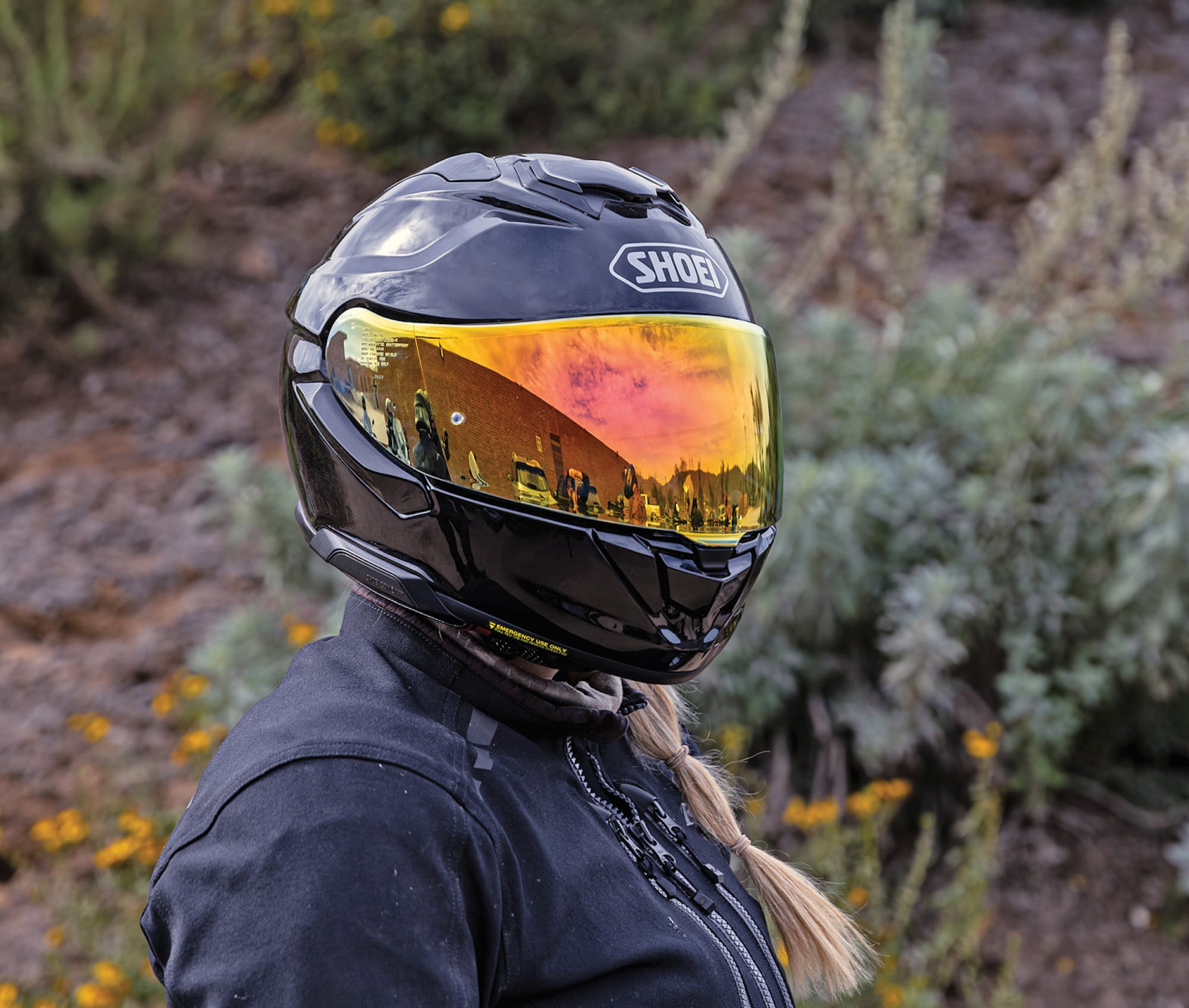Review: Shoei GT-Air 3 Helmet

Supreme Touring Comfort
A motorcycle helmet is the most intimate piece of gear you’ll ever strap on. It’s your shield, your window to the road, and the one thing standing between your skull and a very bad day. Every second on two wheels happens inside your helmet, so the only question is how much is your head worth? These days, the market’s bursting with options, from budget to premium, letting you strike a balance between cost, looks, and protection. The Shoei GT-Air 3 is a full-face sport-touring contender that’s gunning for the crown.
Built Like a Tank, Feels Like a Hug
The GT-Air 3’s Advanced Integrated Matrix shell juggles strength and weight at 3.5 pounds. It’s not the lightest, but it feels robust and is built for steadiness over long miles. Shoei claims the lid has cut lift by 11% and drag by 6% from the GT-Air 2, with a subtle rear spoiler for added stability.
Ventilation upgrades include streamlined chin and top vents to boost airflow while slashing noise. I’m an earplug-wearing girlie, but this lid’s so quiet, I almost skipped them on short jaunts. There’s one hitch with the chin vent, though. I often clip a GoPro on my helmet with a Dango mount, and on this one, it can be a challenge to get it set right with one hand while riding.
Clear Views, Clear Chats
The faceshield locks tightly in the center with stout detents, cracking open for a breeze without budging at speed. If there’s ever a test for determining the highest-quality helmets, it’s how the detents operate. So far, Shoei has been at the top.
The sun visor drops smoothly via a glove-friendly slider. Swapping main shields is a bit of a wrestle, however—I tugged hard and prayed I wouldn’t snap it. It was worth the effort once the fiery red, mirrored shield was in place.
On the left side of the helmet, there’s a spot to mount the integrated Sena SRL3 unit, designed specifically for this model. Using an adapter, older Sena units can be used, and you can even clamp other communication devices in this spot. Of course, all of this is available for purchase separately.
Fit, Retention, and Price
The helmet’s shape is an intermediate oval—perfect for my head—with a micro-ratchet strap that feels solid, unlike some quick-release systems. As a glasses wearer, I loved that it didn’t shift my frames in bumps or put pressure on the sides of my head. Custom cheek pads and an adjustable center pad nail the fit, and Shoei even offers pro fittings.
Sliding this helmet on, I instantly knew riding with it would be a great experience. The snug yet soft cheek pads, the perfect fit around the crown of my head, and the robust yet easy-to-use strap, levers, and detents just felt right. This helmet wasn’t just here to keep me safe. It was here to make sure I had the most pleasant experience possible. But that doesn’t come cheap.
The base model starts at $750. Fancy graphics add $100. A mirrored shield? Another $160. Need different-sized cheek pads? That’s $80. It’s easy to rack up a $1,000 ticket once you have your helmet fully set up, and that’s before factoring in a communication device.
But once I put it on, I understood why so many riders opt for this top-dollar helmet. It just feels like the highest quality from the start. Sure, you can get some pretty good helmets for less, but at the end of the day, the helmet is the most important piece of gear you purchase. Apparently, I have a $1,000 head.
Shoei GT-Air 3 Helmet
From $750 ($910 as tested)
Sizes: XS-XXL
Colors: 20 color and graphics options
